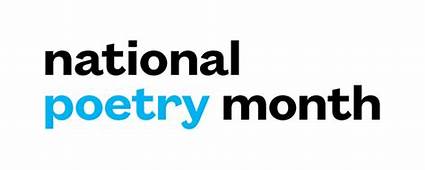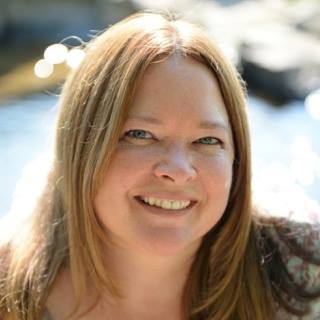In celebration of National Poetry Month the Jasper Project invited several artists, writers, and leaders in the Columbia arts community to share with us their favorite poems and most of them generously accepted.
We’ve put together this collection of our favorite poems and will be sharing them with you, poem by poem, day by day, over the month of April. Some of the poems are old and traditional, others are new and inventive. Some are whimsical, others are insightful. Some rhyme. Some don’t.
What they all have in common is that someone you know loves that poem – and this gives us such lovely insight into the soul of our community.
Thank you to everyone who shared their poetry with us.
And Happy National Poetry Month from Jasper.
Today, we feature Ed Madden.
~~~
When I think about a poet and a poem that has always spoken to me, always drawn me and haunted me, I think of Gerard Manley Hopkins and “As kingfishers catch fire, dragonflies draw flame.” There’s something about Hopkins that feels uncannily personal to me and sometimes resistant to the ways I summarize and explicate and parse in the classroom. I don’t teach Hopkins often, and when I do I find myself getting effusive—about the quirky prayer of praise for the particular and the peculiar in “Pied Beauty,” orr about his desperately exuberant exploded sonnet of theology “That Nature is a Heraclitean Fire and of the Comfort of the Resurrection.“ Or the poem To what serves mortal beauty,” in which he insists that beauty draws us to the things of this world and thus to the divine, but beauty (he is especially troubled by the beauty of young men) can also become an end rather than a means, may distract rather than instruct. Or I get lost in all those haunting sonnets of melancholy, the writer desperate to be faithful but crushed by darkness and deep depression.
I love Hopkins. A quirky writer, driven by sound (sometimes at the expense of sense) and given to idiosyncratic rhythms and syntax. A closeted gay man, repressed and depressed in a religious culture to which he devoted his life. Later, stuck in Ireland as a college teacher and overwhelmed by all the exams he had to grade. Deeply religious, but also deeply in love with the natural world, which is, he thinks—which must be—a revelation of the divine. He wrote in a meditation, “All things therefore are charged with love, are charged with God, and, if we know how to touch them, give off sparks and take fire, yield drops and flow, ring and tell of him.” Several years ago, I participated in a spiritual development retreat at the Lutheran seminary, reading and discussing Hopkins with the seminarians. I felt both out of place and absolutely at home there. Like being in a Hopkins poem.
Of all of his poems, it is “As kingfishers catch fire” that I find myself returning to again and again. The syntax is quirky, and the poem is filled with the kind of sonic density I admire in his work (and try, sometimes, to emulate in my own). It is a poem about the beauty of the world, but even more about how the flame of the divine flares most when we embrace our particularity, our singularity, when we live what we were meant to be. Like a bell that sings out its self, its name, so each of us must live out our own authenticities. (The fact that the poem is hard to read aloud just further emphasizes for me the particularities of sound and self.) Hopkins even makes up a verb: selves. “What I do is me:” he writes, “for that I came.”
This “what I do is me” is not the tolerant you-do-you we hear in contemporary culture, not “do what you think is best for you.” It’s about who you are inside, but also about how the good and authentic version of who you are helps you to live ethically in the world. “The just man justices,” Hopkins writes, again making up a verb, suggesting not that we are what we do, but that we do who we are. If we are just, we live justice. And who we are is both us and more than us. What I do is me.
That’s the octave, the first part of the sonnet where the writer sets the scene, makes a proposition, states the terms. Then the volta, the turn, and the shorter and tighter sestet draws conclusions, moves toward some resolution. For Hopkins, after his little idiosyncratic sermon about selving, he takes an almost-orthodox turn. The just man acts Christlike—or in Hopkins’s quirky phrasing, “Acts in God’s eye what in God’s eye he is – / Christ.” But he pushes on: Christ may be the model for who we can be or what we can do, but Christ is already present in all of us, in lovely limbs and lovely eyes and in faces that aren’t his. It’s not piety or strict adherence to some doctrine or other; it’s not work, it’s play. Christ—whether you read that as the Christian deity or as a figure for our better selves—plays in ten thousand places, and shines through the features of men’s faces. I know, of course, he means the play of a flame, but a good poet can be a punster, and Hopkins wants to say that this is play, not work.
Or it should be play. “All things are charged with love,” as he writes elsewhere, charged with God. If only we knew how to touch, how to see and apprehend, they would take fire—like the blue flash of a kingfisher’s wing—flow through, ring out. So he wants to teach us how to see, a lesson found in the last word of the poem: faces. The rhyme places-faces locates the divine in the faces around us. In the other. There is something deeply human (and humanist) and deeply ethical about this theology, and every rhyme in this quirky little meditation confirms the poet’s argument. The flame of the divine—the good, the true, the authentic—is your name, it’s why you’re here. Justice may be what he is, but grace shines in places and faces not his (not His).
Though I left the strict church of my youth and now find myself among the unaffiliated Nones, I remain deeply compelled by this poem. It could be my daily meditation, my daily prayer: What I do is me, for this I came. Like the flash of a kingfisher’s iridescence, the divine (the good, the just, the true, the authentic, the ethical) may shine in all of us. Like the bell that rings out its own name, each of us can sing the song we were meant to be. And if only we could recognize the holiness of one another, this could be a world of grace and, yes, justice.
Look around you, he says. The world is on fire with love. And God shines in the face of everyone you meet. If only we could learn how to see it.
That’s fucking beautiful.
As Kingfishers Catch Fire
By Gerard Manley Hopkins
As kingfishers catch fire, dragonflies draw flame;
As tumbled over rim in roundy wells
Stones ring; like each tucked string tells, each hung bell's
Bow swung finds tongue to fling out broad its name;
Each mortal thing does one thing and the same:
Deals out that being indoors each one dwells;
Selves — goes itself; myself it speaks and spells,
Crying Whát I dó is me: for that I came.
I say móre: the just man justices;
Keeps grace: thát keeps all his goings graces;
Acts in God's eye what in God's eye he is —
Chríst — for Christ plays in ten thousand places,
Lovely in limbs, and lovely in eyes not his
To the Father through the features of men's faces.
Ed Madden is the author of several books of poetry. He is the poet laureate for the city of Columbia, the poetry editor for Jasper Magazine and Muddy Ford Press, and the director of the Women's and Gender Studies program at USC.






































